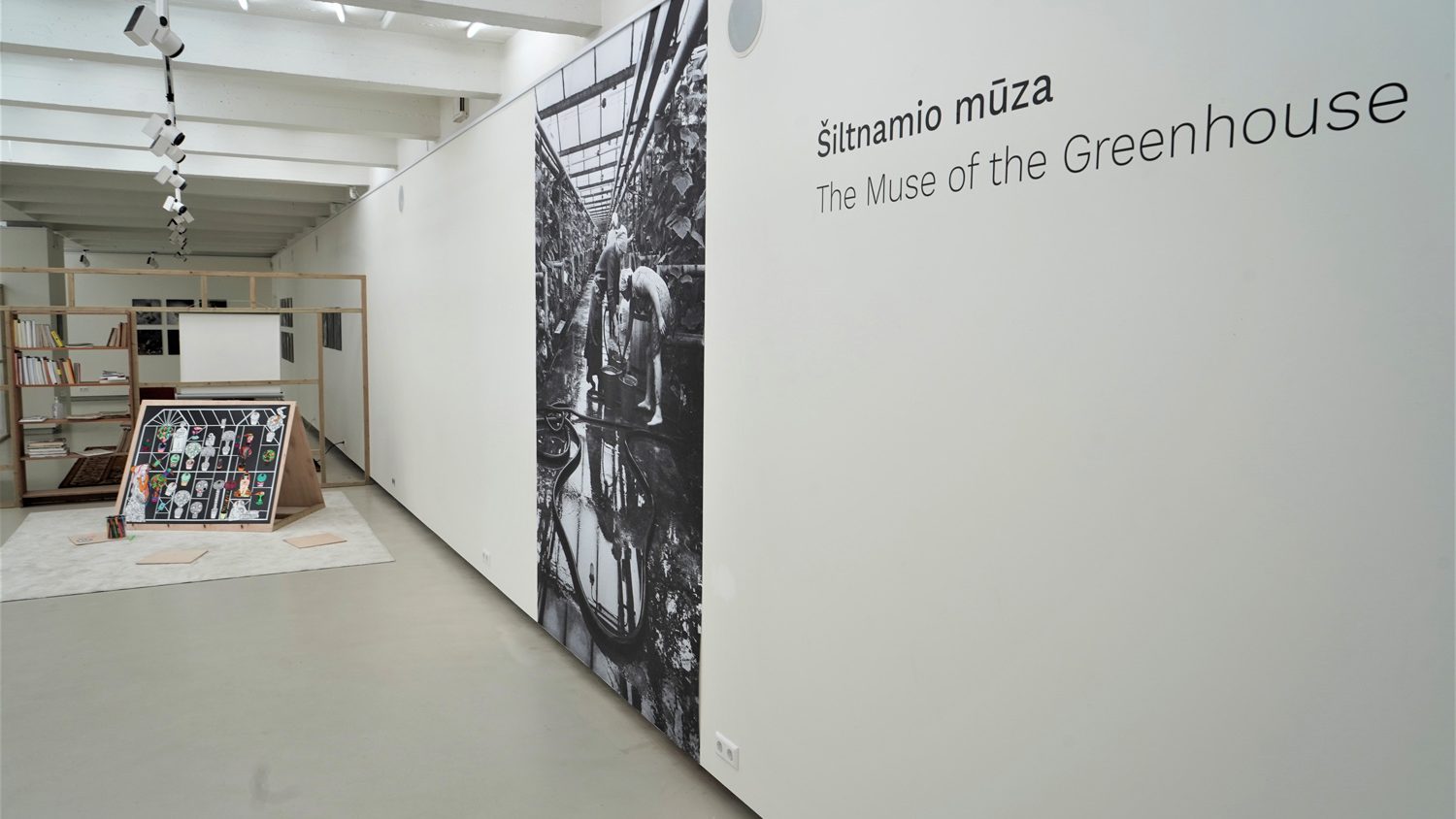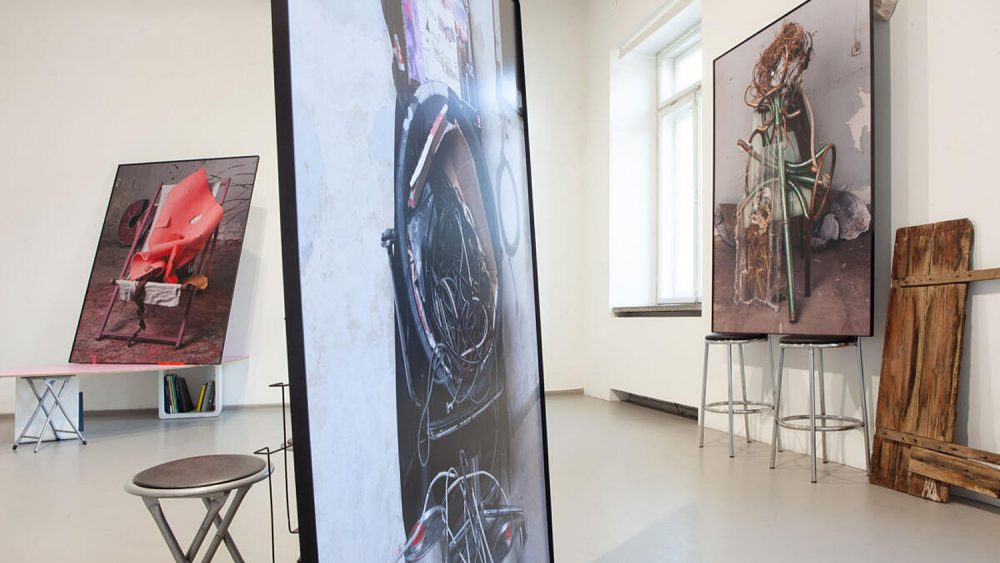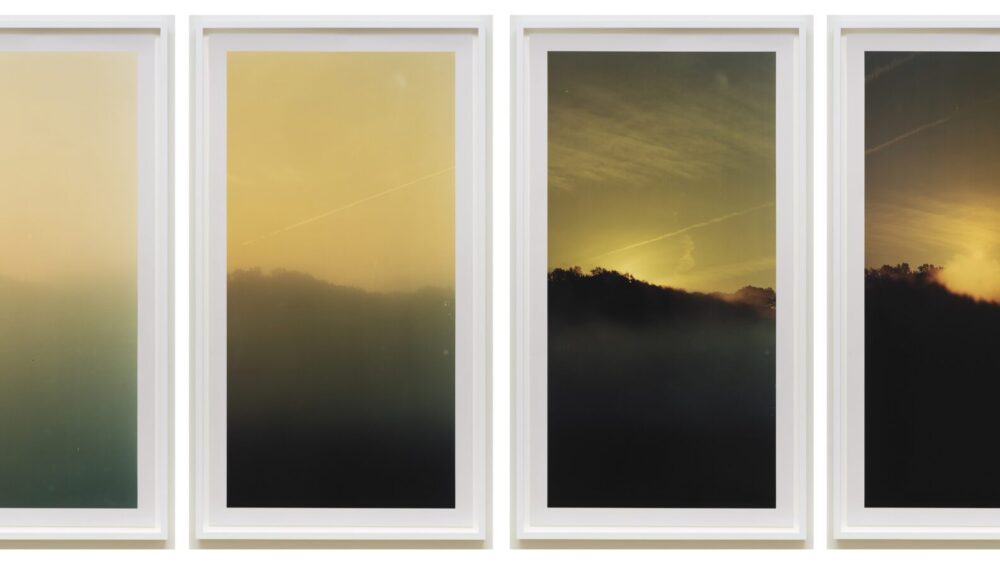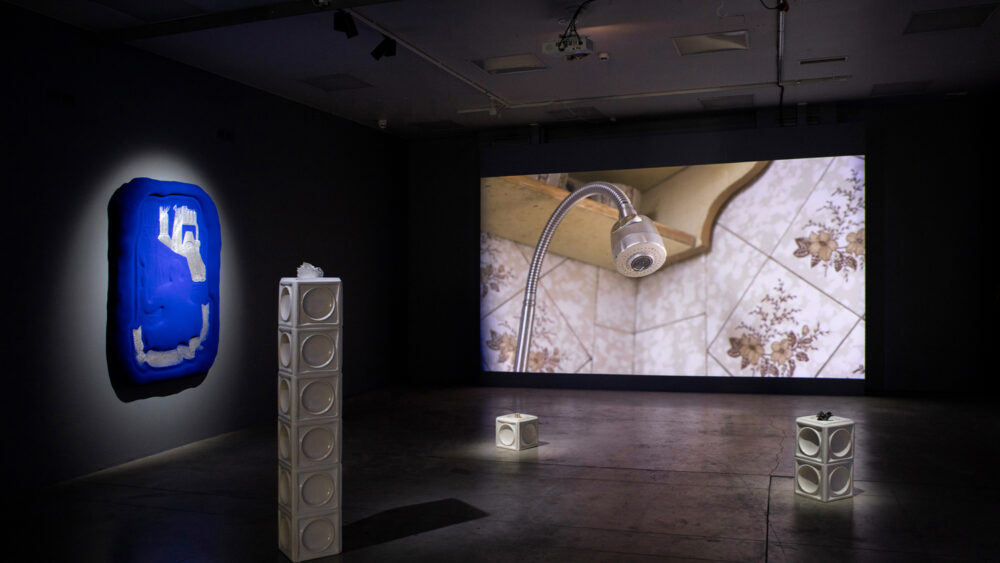The Responsibilities of Light and Warmth
Exhibition The Muse of the Greenhouse curated by Jana Kukaine is open to visitors at the Kaunas Photography Gallery until 30 August. The exhibition offers a continuation of the topics and issues that have been previously associated with the research and curatorial activities of Jana Kukaine. The experience of a woman, as well as the relations between this experience and social expectations, norms, stereotypes and general assumptions projected in a woman’s direction are illuminated through the prism of feminist theories and ideas. The concept of The Muse of the Greenhouse is based on a nuanced and impressive theoretical base, which this time covers the vectors of family, space and work, their intersection and role in women’s lives. The greenhouse metaphor entails both the site of life’s origin and certain isolation, and the curator has interwoven these aspects in the artwork of exhibition in multiple ways. The curator sees the motif of a greenhouse as a possibility of speaking about a wide range of phenomena – the accompanying text mentions both a woman’s mythological connection with nature and earth fertility, and the migration of East European workers to look for better-paid job opportunities in the plantations of Western countries. Last but not least, urban gardening and exclusivity of green lifestyle that became important at the times of pandemic have also been included.
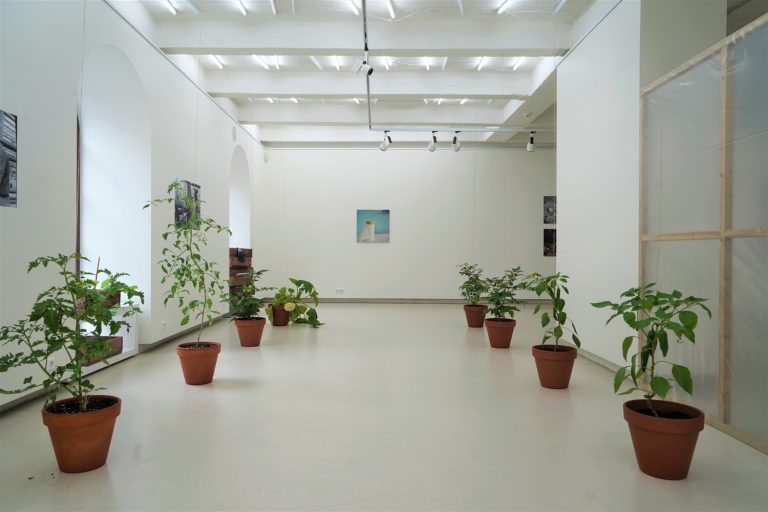
The exhibition’s predominant aspect is, however, the greenhouse as a space and its confrontations with traditional notions of a ‘woman’s space’. A woman’s relationship with a space has shaped a fundamentally important perspective in the development of feminist ideas remaining essential nowadays. In this context we can recall Virginia Woolf’s essay A Room of One’s Own, Estonian artist Liina Siib’s photography project A Woman Takes Little Space or the already hrestomatic writings of feminist theoreticians Linda Nochlin and Griselda Pollock reflecting on how the concept of space in the impressionist and modernist paintings revealed the ideas about the role and functions of a woman at the time. In contemporary public space, too, we often face ‘reminders’ of a woman’s responsibility to keep house, while ignoring the fact that home for a woman most often is her second job, not a place to rest. Parenting and household chores are still perceived as natural women’s responsibilities, whereby the pleasure caused by the ability to serve is the only reward.
A similar thematic framework was also followed in Jana Kukaine’s curated exhibition Silta, jauka istabiņa (Home is Where the Heart Is, 2019, Culture Palace Ziemeļblāzma), where the traditional notions of a woman’s duties in family were criticised, emphasising in artwork the woman’s need to feel the warmth and loveliness of the room for herself not only to generate it for the needs of others. At the same time, the exhibition at the Kaunas Photography Gallery is different. First, it draws attention to other aspects of ‘a woman’s space’ not only home; second, the method of the exhibition curation is based on a looser, more flexible relationship between the key narrative and artwork. The story of The Muse of the Greenhouse is presented in a less illustrative manner than in the previous projects by Jana Kukaine, thus a broader room for speculation is left between the theoretical setting of the exhibition and the perception and associations of the viewers. In an era, in which cultural artefacts are often used as a means of beautification of static information, I think it is important to feel and maintain a balance between the autonomous inherent value of each work of art and its ability to integrate itself in broader narratives, by adding, exposing or highlighting such narratives. And in this case the curator has succeeded in doing so.
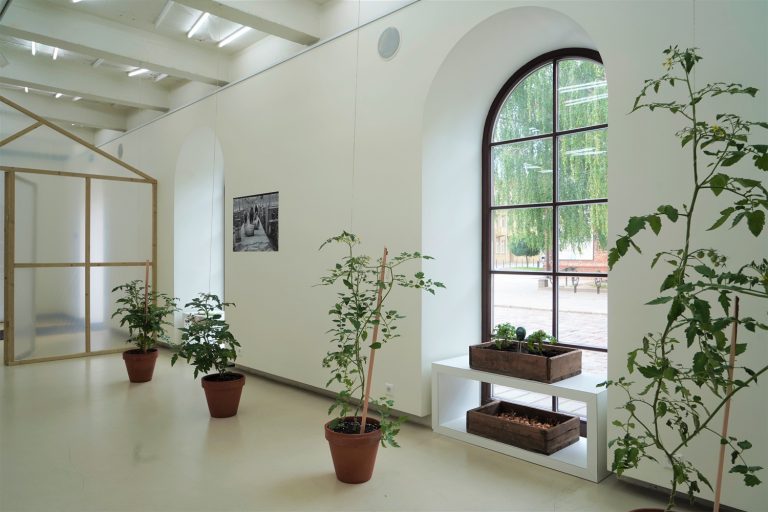
Unlike the cultural examples mentioned above, which artistically interpret a woman’s relationship with the surrounding environment, in exhibition The Muse of the Greenhouse a woman is the one who observes her space; she is not subjected to someone else’s gaze. Thus, the exhibition’s focus from the feelings of isolation and entrapment has been shifted to a woman’s ability to create the meaningful and the living, as well as to emphasise the ‘fertility’ of the space managed by a woman both in an ironic and biologically literal sense. The exhibition has been arranged following the principle of home. The exposition begins with a carefully designed greenhouse improvisation with real vegetable plants. Through the hallway gallery it is transformed in a living room with a ‘TV’ and a bookcase with books on the topics of the exhibition. Finally, a small ‘nursery’ is arranged. Such scenography organically stems from the subject of the exhibition and highlights the aspects that would become decorative in the abstract neutral white cube space. Such an arrangement prevents the viewer from being a passive observer.
Work and private life, private space and work space in the exhibition The Muse of the Greenhouse mutually overlap, illustrating this overlapping in women’s everyday lives, too. It is interesting that from the position of the curator, it is not revealed as a form of inequality or the source of a woman’s strength, but rather adds and reveals, manifests and makes visible this experience in itself, avoiding categorical judgements. This position can also be noticed in the artwork, which through observations, listening and documentation tell about a woman’s living and work space. The artists of the exhibition have created a platform in their works for the stories of other women or creative expression. The classical distinction between the private/public space is extended with a greenhouse as another category of mental space – it is a semi-private space, which is intended for creating ‘public good’ and a space, which needs light, warmth and care.
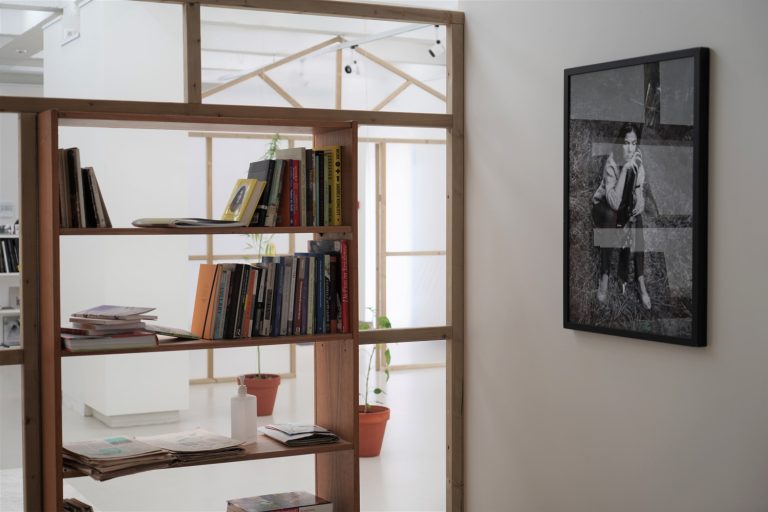
The visual identity of the exhibition is provided by Lithuanian photographer Irena Giedraitienė’s photograph from the series Laborers. Greenhouse factory. Vilnius (1975), in which the author has captured women working in giant greenhouse hangars. It is the documentation of Soviet working life, where the ideological demands for positivity and glorification of the socialist regime are balanced out by the natural appearance and vitality of the portrayed people juxtaposing it with the artificial dogmas of propaganda. Giedraitienė’s photographs in the exhibition, first of all, are included as still up-to-date means of self-reflexion in the post-Soviet societies, because they illustrate the ambiguous legacy of Soviet mentality, its traces in today’s thinking, attitude towards a body, sexuality, reproduction. Second, it is the industrial greenhouse, which has been converted from a small leisure garden into a giant farm, where the efficiency and productivity are prioritised, as opposed to the connection with all the living. The images remind of the binary categories of Soviet feminism – the voice and gender equality in public space while ignoring the right to freedom in private life, bringing both sexes closer to asexual non-sex robots that serve to society and not their private intentions. Not to believe in gender equality that was postulated by the official power meant to expose oneself to danger. Attempts to overcome this trauma, which is rooted in the ambivalent attitude of gender equality inherited from the Soviet period, is a crucial aspect of the feminist discourse in the East European region, and it is also revealed by Giedraitienė’s photographs.
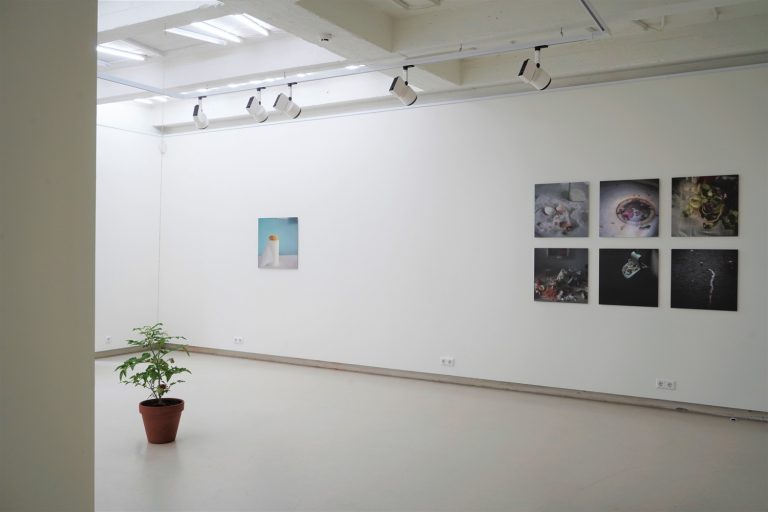
The photographs of Northern Irish artist Clare Gallagher offer something diametrically opposite – it is a melancholic daily routine in which the people’s lives are narrated through the objecthood of people. Her series of photographs Domestic Drift (2011) and The Second Shift (2019) can be viewed as ironic paraphrases of the vanitas genre where piles of leftover food and dirty clothes, as well as untidy rooms prevail. The fragments of interior captured in a distinctly cold light bring forward a woman’s home as a site of work. The ghostly before-the-sunrise-light indicates that photographs are being taken at a time when other inhabitants are still asleep (sleeping children are also visible). The creative interests are subjected to the needs of others and a woman can only have time for artistic activities, when she does not have to provide the needs of others. At the same time, the ordinariness photographed by Clare Gallagher is what makes a place a home. Housework of a woman is excluded from the attention of society just as Clare Gallagher’s photographs would not be included in the family photo collection, although proportionally these scenes relate to the ‘family life’ far more than its pretty and official part (celebrations, vacations, etc.).
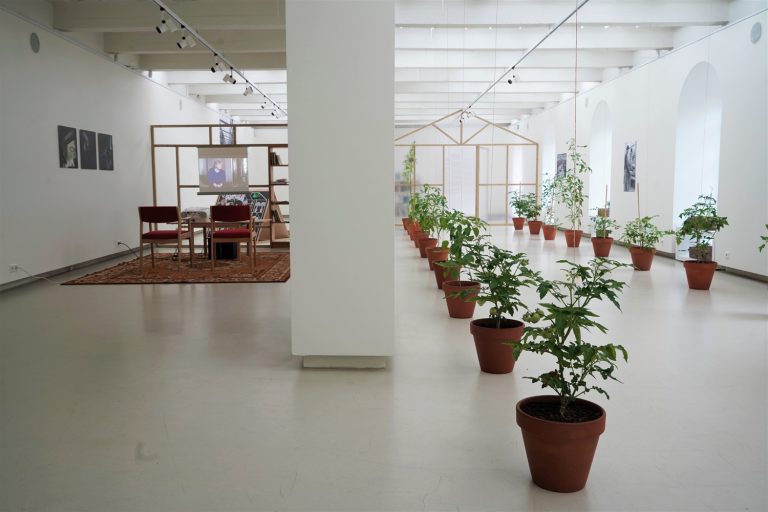
On the screen of the living room, Finnish artist Jaana Kokko’s film An Hour of a Working Woman (2020) is presented. It is a visual essay about a place in Valga, where the Estonian-Finnish playwright, Marxist and politician Hella Vuolijoki (1886-1954) was born. In this place on the border of Estonia and Latvia there is a garden, which the politician took care of. However, the video work turns to modern women, who have lived and are still living in this place. The complicated life stories of the women are connected by the soil as a substance. The work by Elīna Brasliņa What’s Up In the Greenhouse? (2020) concludes the exhibition. It engages the viewers allowing to make a greenhouse on one’s own and to paint and arrange the elements of installation. The work is positioned as an installation as opposed to an addition that is engaging children.
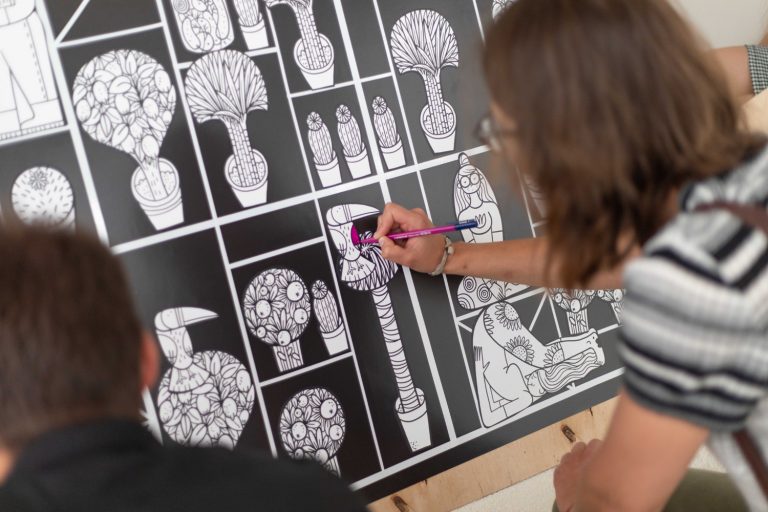
Although not all aspects of the ‘greenhouse’ announced in the accompanying text of the exhibition are revealed, the perspective offered by Jana Kukaine seems to be a valuable starting point for a reflection on the issue of care and why as a psychological phenomenon it still remains the women’s realm. Perhaps the ability of a woman to take care is our only hope to overcome the ecological disasters that are affecting our everyday lives increasingly more. How are the gender roles constructed by society revealed in the placemaking and individual’s ability to feel and manage the surrounding environment? How have the various times and ideologies influenced and deformed the human-nature relationship? The exhibition does not offer outspoken catchphrases. Rather, it activates a more sensitive view on these issues revealing not necessarily the simple psychology of home in a delicate ensemble of images and space.
